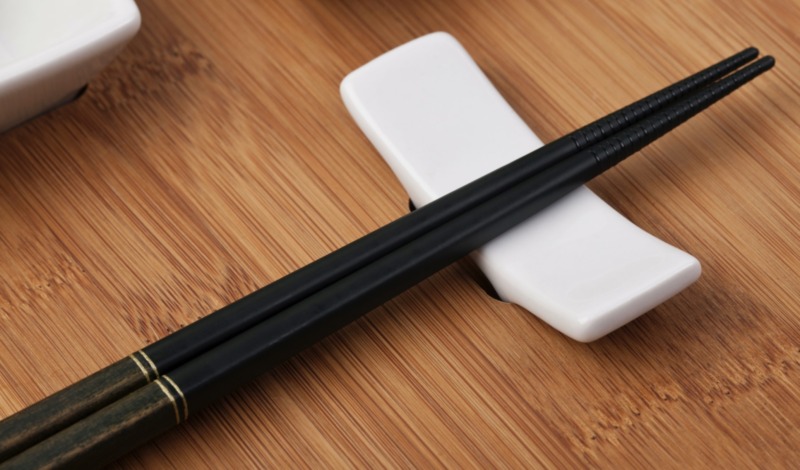Mastering Using Chopsticks: A Step-by-Step Guide

Chopsticks, those deceptively simple utensils used for centuries across Asia, can be a source of fascination and frustration for those unfamiliar with them. However, learning to use chopsticks is not only a valuable skill but also a fun and rewarding experience. In this blog post, we’ll guide you through the steps of using chopsticks, from choosing the right pair to mastering the techniques.
Choosing the Right Chopsticks
Before you start your journey to chopstick mastery, it’s essential to have the right tools. There are various types of chopsticks available, so consider the following factors when selecting chopsticks:
- Material: Chopsticks can be made from wood, bamboo, plastic, metal, or even bone. Wooden and bamboo chopsticks are the most traditional and widely used. They are lightweight and easy to handle.
- Length: The length of chopsticks varies, but they are typically around 9 to 10 inches (23 to 25 cm) long. Longer chopsticks provide more leverage, while shorter ones can be easier to control.
- Tips: Some chopsticks have pointed tips, while others are squared off. Pointed tips are typically used for more delicate food items, while squared tips are better for picking up larger pieces.
- Style: Chopsticks come in various styles and designs, from plain and simple to ornate and decorative. Choose a style that suits your preferences and the occasion.
Holding Chopsticks
The first step in using chopsticks is learning how to hold them correctly. Here’s how to do it:
- Start with the Right Hand: Hold one chopstick between your thumb and the base of your right-hand fingers, much like you would hold a pencil.
- Rest the Second Chopstick: Place the second chopstick between your thumb and the tip of your right-hand fingers. This chopstick should be held like a pencil as well.
- Adjust Your Grip: Use your thumb, index, and middle fingers to hold the top chopstick. This chopstick remains stationary. The lower chopstick is controlled by your thumb, middle, and ring fingers. It should be able to move and make contact with the top chopstick.
Basic Techniques
Now that you’ve got the correct grip, it’s time to practice some basic techniques:
- The Pinch: Master the pinch technique by placing a small piece of food between your chopsticks and pinching it. This is the most straightforward way to pick up food.
- The Scoop: For loose or small food items, use the scoop technique. Hold one chopstick stationary while you move the other underneath the food, scooping it up.
- The Roll: When eating round foods like sushi, use the roll technique. Hold one chopstick stationary and use the other to roll the food onto it.
Practice, Patience, and Perseverance
Using chopsticks is like learning any skill – it takes practice. Here are some tips to help you improve your chopstick skills:
- Start with Simple Foods: Begin with easy-to-pick-up foods like rice, noodles, or soft vegetables. Gradually move on to more challenging items.
- Keep Your Chopsticks Clean: Clean chopsticks are easier to use. Make sure there are no splinters or rough edges that could hinder your grip.
- Watch and Learn: Observe how people who are skilled at using chopsticks handle their utensils. You can find numerous tutorials and videos online to help you understand the techniques better.
- Be Patient: Don’t get discouraged if you don’t master chopsticks right away. It’s perfectly normal to drop food or struggle in the beginning.
- Use Training Chopsticks: There are special training chopsticks available with attachments that keep them together. These can be helpful for beginners to get the hang of using chopsticks.
Etiquette and Respect
Using chopsticks isn’t just about mastering the physical techniques; it’s also about understanding and respecting the cultural aspects associated with them. Here are a few etiquette tips to keep in mind:
- Don’t Point: Avoid pointing at people or food with your chopsticks – it’s considered impolite.
- Don’t Stick Chopsticks Vertically: Don’t stick your chopsticks upright in a bowl of food, as this resembles a funeral ritual in some Asian cultures.
- Don’t Pass Food: If you want to share food, it’s customary to use serving utensils or the other end of your chopsticks, not the end you eat with.
- Practice Sharing: When dining with others, consider ordering dishes meant for sharing. This promotes a communal dining experience and allows everyone to use chopsticks together.
In conclusion, using chopsticks is not only a valuable skill but also a fun and cultural experience. By choosing the right chopsticks, learning the correct grip, and practicing the basic techniques, you can elevate your dining experience and explore the rich tradition of Asian cuisine with confidence. So, pick up your chopsticks, try some delicious Asian dishes, and embrace the art of chopstick dining. With patience and practice, you’ll soon be a chopstick pro!

